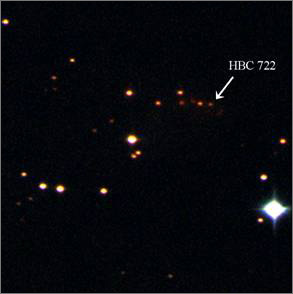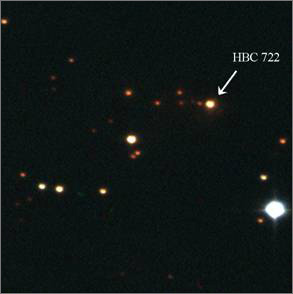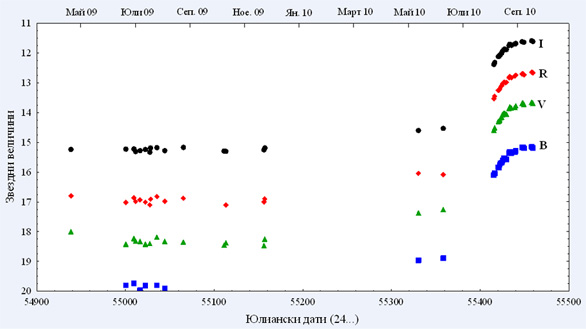An outburst of a new FU Orionis type star was discovered in the National Astronomical
Observatory Rozhen. This is the first in the world registration of the brightness
increase during the initial phase of such an outburst.
September 5, 2010
Bulgarian astronomers discovered a new star from FU Orionis type using the 50/70 cm Schmidt telescope of National Astronomical Observatory Rozhen. Stars of this type are young objects in the phase of gravitational contraction and are surrounded with massive circumstellar disks. During the early phases of stellar evolution, a part of the substance of the circumstellar disk falls onto the star surface. In case of instability of the disk, the reasons for which are not specified yet, the amount of matter falling from the circumstellar disk onto the star surface increased significantly. Then a powerful outburst is observed during which the star brightness increased by 4-5 magnitudes (the increase of luminosity is in the order of 100 times) for a period of several decades.
The object, which outburst was discovered in NAO Rozhen during the recent months, is located in the dark clouds between the bright nebula NGC 7000 and IC 5070, also known by their names: North America and Pelican. Based on spectral observations from Lick Observatory (USA) obtained in 1977, it was included in the catalogs of young stars with emission lines. According to one of them, composed by the American astronomer George Herbig, the star is denoted as HBC 722, which is its most common name.
CCD frames of HBC 722 obtained with the Schmidt telescope of NAO Rozhen, to the left on Oct. 8, 2009, to the right on 6 Aug. 2010. The amplitude of the registered outburst is more than 4 magnitudes. (Images are obtained by recombination of three frames in B, V and R filters)
The outburst of HBC 722 was detected on 6 Aug. 2010 during the observations of NGC 7000 with the Schmidt telescope of NAO Rozhen. The following observations with the 1.3 m telescope of the observatory Skinakas (Crete, Greece) showed that the brightness of the object continues to rise and that it has not yet reached a maximum magnitude. The spectrum of HBC 722 obtained by our request in the Schiaparelli Observatory (Varese, Italy) showed significant changes in the line profiles of hydrogen, sodium and magnesium, which are characteristic of the stars from FU Orionis type. The value of our discovery is that, for the first time such an object is studied during the rise of brightness. All other stars of this type have been found after having undergone the maximum of brightness and no information was obtained about the processes during the initial phase of the outburst.
Light curves of HBC 722 in BVRI filters from Apr. 2009 to Sep. 2010. Observations ware made with the 50/70 cm Schmidt telescope of NAO Rozhen and with the 1.3 m telescope of the observatory Skinakas. An increase in brightness is observed as early as May-June 2010 and on Sep. 2010 the star brightness approaching a maximal value.
After the discovering of the outburst of HBC 722, proposals for cooperation in its investigation was received from astronomers from Italy, USA, Spain, Belgium and UK. The unique discovery of the outburst of HBC 722 and the followed photometric and spectral studies are a key to solving the exotic evolution of young stars and the formation of planetary systems around them.
Our first results are published in Astronomy and Astrophysics, 2010, 523, L3. More details and current information can be obtained from collaborators of the Institute of Astronomy and National Astronomical Observatory:
This investigation is in part supported by the Bulgarian National Scientific Fundation (grand number DO 02 - 85).
Dr. Evgeni Semkov
Stoyanka Peneva, PhD student


